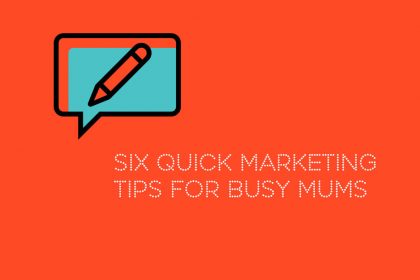Seven steps to planning a successful digital marketing campaign
Do you have a plan for your digital marketing? A successful campaign has many components. Here are seven things you need to ensure it’s successful.
It’s been famously said, “A goal without a plan is just a wish.” So you can (and should) have goals to boost your brand visibility, leads, and sales with digital marketing.
But you need an actual plan to make it happen.
Don’t just cross your fingers and hope for excellent digital marketing results. Plan for them by scoping out and writing down your digital marketing campaign. And then taking action.
Seven steps to planning a successful digital marketing campaign
But what should be included in your strategy? How do you get started? Here are seven steps to planning a successful digital marketing campaign.
1) Set your goals
What do you want to accomplish with your digital marketing? Break this down into short, medium, and long-term goals.
Be as specific as possible. Saying “build my brand presence” doesn’t mean anything – there’s no way to know if you’ve achieved it. Instead, say, “Get brand mentions on Facebook to X per month,” or another specific metric.
Each of your goals should be a SMART goal so that you can use strategies to move toward it and measure your progress over time.
2) Start with SEO
The first step in any digital marketing campaign is usually search engine optimisation (SEO). One of the reasons you need to do this first is that SEO is a long-term strategy.
Having this section of your marketing humming along will help you rank better in search results over time, making every other part of your marketing more effective.
There are two kinds of SEO strategies: on-page and off-page. On-page SEO focuses on what you can do specifically with your website, like using the right keywords, tags, and site structure. You also need to make sure your website is mobile-optimised, secure, and loads quickly.
Off-page SEO involves boosting your brand and authority outside of your website. This involves getting great online reviews, claiming your Google My Business page, winning high-quality inbound links, and keeping your name, address, and phone number (NAP) consistent across the internet.
Managing SEO can be a lot when you’re already running a business, so you may want to work with a digital marketing agency. Or invest in an SEO course for small businesses (like our SEO Kit) that teaches you only what you need to know and do in order to see results.
3) Segment your audience
Everyone wants to feel special and appreciated, as if they are receiving individual attention. No one wants to be part of your “target demographic.”
Imagine saying, “Hello, 30-45 year old female. I see that you are a professional. Would you like to buy my product?”
That’s not going to appeal to anyone. Instead, it would be much better to say, “Hello Sally. How’s your job at the bank going? I have something that can help reduce your stress at work.”
The good news is that the enormous amount of data online makes it easier than ever to target your customers very specifically. For instance, Facebook ads allow you to target people based on occupation, buying patterns, sports fandoms, hobbies, and much, much more.
There’s no excuse not to give your potential customers the personal attention they want with segmentation.
4) Create appealing written content
Ever heard the expression ‘content is king‘? This phrase was first used by Bill Gates, who published an essay on Microsoft’s website.
And he was right. Today businesses naturally include content as a significant component of any marketing plan. And one of the easiest forms of content most small businesses can create is written content.
Written content is also a powerful SEO tool, especially if you understand how to use SEO properly, and have identified the correct keywords for your business. (We show you how to do this in our SEO Kit.)
But how do you create written content that will appeal to your target audience and help market your business?
You need to start off with a content plan. You need to understand what you want your content to achieve (this will obviously align with your overall goals for this digital marketing campaign), then decide what themes and sub themes your content should cover.
Once you have these, you can start brainstorming specific content ideas (always ensuring you have ideas for each stage of your marketing journey or funnel, from awareness right through to purchase). And once you have a list of ideas, you can map them against a content schedule and get creating!
To help you plan your content strategy and write appealing content, here are some articles we recommend reading:
- An easy four-step formula for creating a content marketing plan
- Why you don’t need to be interesting to write a great blog
- How to write a blog people will want to read
- Four steps to making your business blog successful
5) Take advantage of social media
Why should social media be a vital part of your digital marketing strategy? Primarily because of how much time everyone spends on it. People spend hours every day on Facebook, Pinterest, Instagram, and YouTube. By being present on those platforms, you’re meeting people where they spend time.
As a business on social media, you should focus on sharing useful content (your own and content created by others) and building relationships. Nobody goes online hoping to be blasted with sales messages and ads. If you do that, you’ll just be ignored.
Instead, share useful blog posts, helpful tips, and answers to common questions. Engage in existing conversations, answer questions, and add value. Don’t forget to use humour and show personality to build relationships.
6) Use video marketing
People love video. It has been a popular online medium for years, and if you aren’t using video marketing as part of your digital strategy you’re missing a great way to engage your audience.
Video combines the visual and hearing senses, providing more stimulation than text or speech alone. It’s much easier to convey your desired tone and humour when you can combine verbal and non-verbal communication.
The average viewer retains significantly more of a message that they watch than one they read. As a result, using video is essential if you want your marketing message to truly stick.
Many companies shy away from using video because they feel like it will be too time-consuming. But ‘video’ can be as simple as going live on Facebook using your phone. You can also get good quality video cameras online without having to pay for a professional setup.
With a good camera and a bit of video editing, you can create almost any video content you want.
7) Execute and measure your plan
Once you have a digital marketing plan that will get you to your goals, all that’s left is to implement it and measure your progress.
Over time, you’ll see if the plan is having the desired results. You may need to make adjustments, but as you do you will be reaching customers and leads effectively and building your business.
Katrina is an expert in building online partnerships. She’s been working in digital marketing services, Local SEO Search Inc. for several years.
Photo by BBH Singapore










